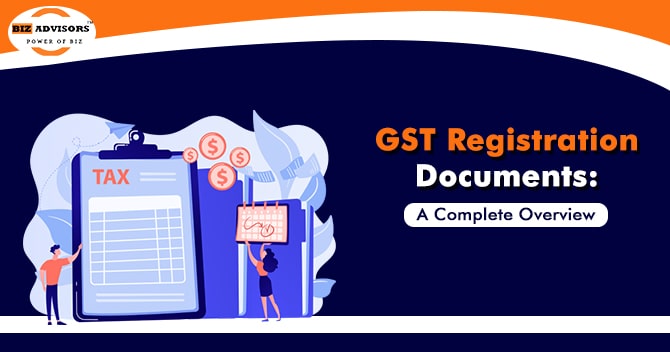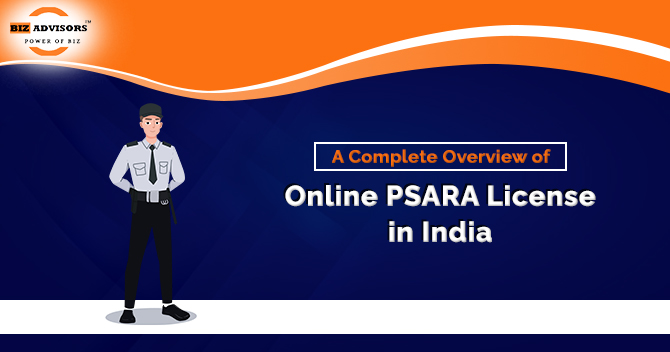Since the whole process of GST Registration depends upon the submissions made by the applicant regarding their business, these submissions can be considered the most important aspect of a GST Registration process. Launched in 2017, the Goods and Services Tax has seen a huge development throughout the years. The hassle-free taxing system has not only helped the customers in fulfilling their obligations but also the authorities in collecting and maintaining the information for the people. The GST maintained by the Centre as well as the State authorities regulate their rules as per their requirement. In this article we are going to talk about the important documents that are required for an applicant to present before the authorities in order to make a GST Registration successful.
What is GST Registration?
Replacing all indirect taxes, the Goods and Services Tax was introduced to provide a single umbrella to all the separate minimal taxes. This provided for the customer to overcome several taxes at the same time. The Goods and Services Taxes were imposed on good and service provider with a turnover of more than Rs 20 Lakhs. While enterprises with a total turnover of Rs 20 Lakhs were given the option to voluntary opt for the GST Registration, enterprises with a turnover of more than 40 Lakhs are supposed to mandatorily register themselves under the GST Registration facility. The GST Registration is the process that acknowledges the enterprises in order to provide benefits under the GST laws. The GST laws provide for certain facilities and concessions to the registered enterprises by acknowledging their GST Registration certificate.
Categories under GST Registration
The GST Registration can be done under four categories-
- Normal taxpayer
- Casual taxable person
- Composition taxpayer
- Non-resident taxable person
A GST Registration can also be divided as-
- Voluntary GST registration – when an enterprise is at a turnover of Rs 20 Lakhs, it can voluntarily opt for a GST registration.
- Mandatory GST registration – when an enterprise is at a turnover of Rs 40 Lakhs, it has to mandatorily opt for a GST registration.
Documents Necessary for GST Registration
For Individuals or Sole Proprietors
- PAN number of the applicant
- Aadhaar number of the applicant
- Photograph of the applicant
- Address proof of the applicant
- Details of the bank account of the applicant
For Partners and LLPs
- Partnership deed
- PAN card of the partners
- Photographs of the partners
- Address proofs of the partners
- Aadhaar number of the authorized signatory
- LLP registration proof
- Bank details of the company
- Address proof of the registered business office
For Hindu Undivided Families
- PAN number of the Hindu Undivided Families
- PAN number of the Karta
- Photograph of the applicant
- Bank details
- Address proof
For Companies
- PAN details of the Company
- Incorporation certificate of the applicant company
- Memorandum and Articles of Association
- Proof of appointment of the signatory
- Aadhaar card of the signatory
- PAN of directors
- Address proof of directors
- Bank details of the company
- Principal address proof of the company
For A Society or Club
- Club/society registration certificate
- PAN number of society and that of the partners
- Photograph
- Bank statement
- Address proof
- Authorization letter signed by signatories
Procedure
Step 1: Visit the GST portal[1].
Step 2: Log into the account.
Step 3: Obtain a TRN by completing verification.
Step 4: Log in with the TRN issued.
Step 5: Fill in the business details.
Step 6: Fill in the promoter details.
Step 7: Fill in the authorized signatory details.
Step 8: Provide proof of registered place of business and any additional place of business.
Step 9: Information regarding goods and services.
Step 10: Provide the bank details.
Step 11: Verification of application is done.
Step 12: On successful registration, an Application Reference Number (ARN) is generated.
Benefits of GST Registration
- Helps regulate unorganized sectors.
- Easy cross-border marketing.
- Regulated functioning of e-commerce.
- Lesser compliance, prevent tax cascading effect.
- Easier online mode of working.
- Reduce hurdles between administrators and taxpayers.
- Increased authenticity and brand value.
Conclusion
In a GST Registration process filling in the correct documents is the most important step. These documents decide the end result of the process. Documents required for a GST Registration such as Aadhaar number, PAN number etc. reflect the authenticity of the applicant and the good faith in doing the suggested. The GST laws provide concessions to the businesses of service providers depending on their eligibility based on their documentation. Hence, fulfilling the document requirements plays a vital role in GST Registration. For any further queries on documents related to a GST Registration, contact Bizadvisors.
Read our article:All You Need to Know about Benefits of GST Registration
 9559179325
9559179325 9559179325
9559179325





